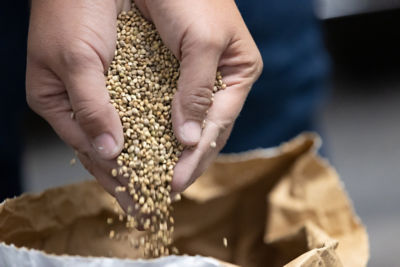Causal Agent
Xanthomonas euvesicatoria
Distribution
Worldwide in warm, humid areas
Symptoms
Symptoms develop on leaves, stems and fruit of sweet pepper and are less severe in hot pepper. Symptoms first appear on leaf undersurfaces as small, irregular, watersoaked areas. Later, lesions enlarge, turn dark-brown to black with a pale tan center and may develop a thin, yellow halo. Generally, lesions on upper leaf surfaces are slightly sunken, and those on lower leaf surfaces are slightly raised. Leaves that are severely infected often turn chlorotic and appear ragged. Defoliation occurs under heavy disease pressure. Stem lesions appear as narrow, light-brown, longitudinally raised cankers. Fruit spots begin as water-soaked areas that later turn necrotic. These spots are rough in appearance and crack as they develop.
 Large, rough lesions on green fruit.
Large, rough lesions on green fruit.
 Longitudinal stem cankers.
Longitudinal stem cankers.
Conditions for Development
Xanthomonas is seed-borne on the seed surface and within the seed. Infected seed and transplants moved over long distances can be the initial source of inoculum for epidemics. The bacterium also survives in crop debris, volunteer plants and in solanaceous weeds. High relative humidity and heavy dew formation on leaves, together with warm weather, favor infection and development of Bacterial Spot. The bacterium is readily water-splashed from infected transplants or debris to healthy plants. Fruit are infected through growth cracks, abrasions, insect punctures and other wounds. Secondary fruit rots often develop around Bacterial Spot lesions during damp weather.
Control
Use only tested and treated seed and certified transplants. Once present, the disease is difficult to control. Commercial varieties with one or more genes for resistance to X. campestris pv. vesicatoria are available. Copper-based sprays can help reduce the rate of disease development. Clean cultivation equipment before entering a new field, avoid entering fields when foliage is wet, and incorporate plant debris immediately after harvest to help reduce losses due to Bacterial Spot.




